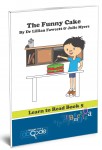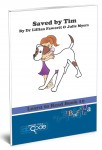What is unique about the Cracking the ABC Code Decodable Learn to Read series?
Click on the images at the bottom of the page to see a sample of each book.
-
Font gradually becomes smaller and the amount of text on each page gradually increases.
- The first book in the series has size 24 font and this gradually decreases to a size 13 font in Book 20.
- Similarly, the amount of text decreases from one short sentence with a large picture in Book 1 to full pages of text with 5 small pictures in Book 20. This makes it easy for children to transition into reading entry level chapter books.
- A sans serif font is used as research indicates this is the easiest font for people with dyslexia to read (Luz & Baeza-Yates, 2013).
- A double space has been used after full stops to encourage students to pause before reading the next sentence.
-
Content words are decodable
- The first step in reading is learning how to decode unknown words. This requires good phonic knowledge and is critical to learning to read (see Ryder, Tunmer & Greaney, 2008).
- Each book in the series uses decodable content words which children can decode using the phonic knowledge they have been taught in the Cracking the ABC Code Multisensory Reading Level 2 books.
- Each book focuses on a different digraph (sh, ch, th) and the introduction of these digraphs match the Cracking the ABC Code Multisensory Reading Level 2 books.
- The application of this knowledge is accumulative in that once a digraph has been taught words using those digraphs continue to be used in subsequent books in the series.
- Click here for a list of the decodable words and the digraphs introduced in each book.
-
Repetition of key high frequency words embedded into the story.
- Competent reading requires fluency and fluency is attained by being able to immediately recognise words (Shaywitz & Shaywitz, 2008) which is a different process to decoding (Schurz, et al., 2010). For many readers numerous exposures to a word is required before it is immediately recognised.
- McArthur et al.’ (2015) study found that training in both phonics and high frequency words significantly improved the reading fluency of poor readers.
- The series teaches children 200 key words (taken from the Dolch list) which represents 70% of our everyday language.
- These key words may or may not be words that children can decode with their current phonic knowledge, but are words that are frequently used and consequently important to learn in order to achieve fluency.
- The words are introduced in sets of 20, with the same key words used in different sentence structures multiple times throughout two consecutive books (e.g., Book 1 & 2, Books 3 & 4).
- Once key words have been introduced, they are continually used throughout subsequent books in the series. This constant exposure ensures that even if children do not remember the words initially, they will be able to instantly recognise them by the end of the series. Click here for a list of the key words.
Cracking the ABC Code Decodable Learn to Read Books
Click on images to see sample pages
Click on images to see sample pages
Cracking the ABC Code Learn to Read Comprehension Workbooks 
References
McArthur, G., Kohnen, S., Jones, K., Eve, P., Banales, E., Larsen, L., & Castles, A. (2015). Replicability of sight word training and phonics training in poor readers: A randomised controlled trial. PeerJ, doi:http://dx.doi.org/10.7717/peerj.922
Ryder , J., Tunmer, W., & Greaney, K. (2008) Explicit instruction in phonemic awareness and phonemically based decoding skills as an intervention strategy for struggling readers in whole language classrooms. Reading and Writing, 21 (4), 349-369.
Shaywitz, S. E., & Shaywitz, B. A. (2008). Paying attention to reading: The neurobiology of reading and dyslexia. Development and Psychopathology, 20(4), 1329-49.
Schurz, M., Sturm, D., Richlan, F., Kronbichler, M., Ladurner, G., & Wimmer, H. (2010). A dual-route perspective on brain activation in response to visual words: Evidence for a length by lexicality interaction in the visual word form area (VWFA) Neuroimage, 49(3), 2649–2661.

If you have any questions or would like to discuss your child or student’s particular literacy problem, please contact Lillian.




















